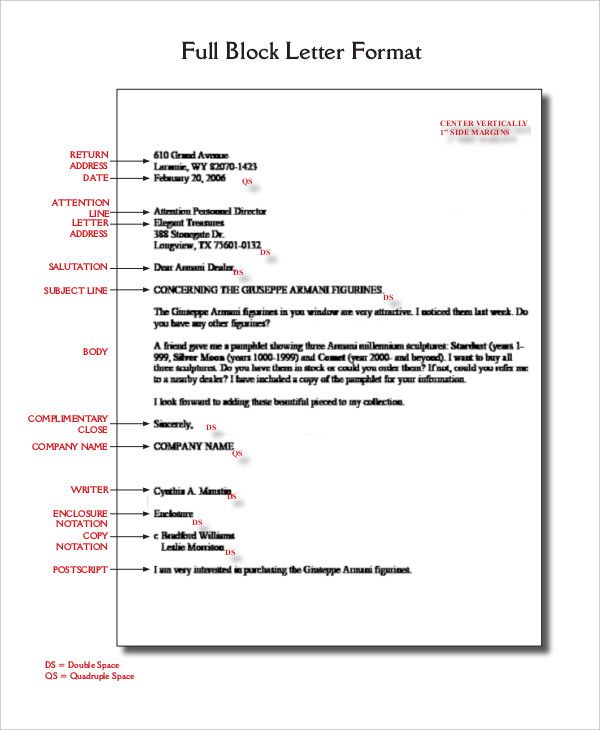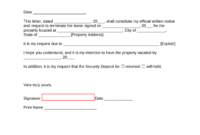Navigating the world of professional communication can sometimes feel like trying to solve a puzzle, especially when you need to make a strong, positive impression. A well-crafted business letter isn’t just about the words you choose; it’s also about how you present them. The format speaks volumes before a single word is read, signaling your attention to detail and professionalism.
Among the various letter styles, the full block format stands out as a highly popular and widely accepted choice for its clean lines and straightforward presentation. It’s perfect for everything from cover letters and formal inquiries to complaints and appreciation notes. If you’re looking for a simple yet incredibly effective way to structure your professional correspondence, understanding this format is a fantastic step.
Understanding the Full Block Style Format
When we talk about the full block style, we’re referring to a specific layout that emphasizes uniformity and readability. The defining characteristic is that every single line of the letter – from your address at the top to your typed name at the bottom – is aligned with the left margin. There are no indentations for paragraphs, and each new section is separated by a double space, which means an extra blank line, enhancing visual clarity. This creates a very neat, clean, and modern appearance, which is why it’s a go-to for so many businesses and individuals.
This style strips away any potential ambiguity in formatting, making your letter incredibly easy to scan and understand. Recipients can quickly identify key pieces of information without their eyes needing to jump around the page. It projects an image of precision and professionalism, suggesting that you are organized and clear in your communication. This consistency helps to maintain a serious and respectful tone appropriate for all business interactions.
The full block style business letter template simplifies the entire writing process. Once you grasp its fundamental principles, you can apply them to virtually any business communication scenario. It removes the guesswork associated with formatting, allowing you to focus more on the content and message you wish to convey, rather than getting bogged down in where to indent or how many spaces to leave.

Key Elements of a Full Block Letter
- Sender’s Address: Your full address, including street, city, state, and zip code.
- Date: The full date the letter is written (e.g., October 26, 2023).
- Recipient’s Address: The full name, title (if known), company name, and address of the person or organization you are writing to.
- Salutation: A formal greeting, typically “Dear Mr./Ms. [Last Name],” or “To Whom It May Concern,” if the recipient is unknown.
- Body: The main content of your letter, usually broken into short, single-spaced paragraphs.
- Closing: A formal closing, such as “Sincerely,” “Regards,” or “Respectfully.”
- Signature: Your handwritten signature.
- Typed Name: Your full typed name below your signature.
- Optional Notations: This includes “Enclosure” if you’re sending additional documents, or “CC:” if copies are being sent to others.
Every one of these elements is positioned flush with the left margin. The only variation in spacing is the single space within paragraphs and double spaces between paragraphs and sections to delineate them clearly.
Step-by-Step Guide to Creating Your Full Block Letter
Crafting a full block letter doesn’t have to be intimidating. By breaking it down into manageable steps, you’ll be able to produce professional correspondence with ease. Before you even open your word processor, take a moment to consider the purpose of your letter and who your audience is. This helps you tailor your message and tone effectively. For instance, a letter applying for a job will differ in tone from a customer complaint, even if the format remains consistent.
Once you have a clear idea of your message, open a new document in your word processing software. Set your margins to a standard one inch on all sides, and choose a professional, easy-to-read font like Times New Roman, Arial, or Calibri, typically in 10 or 12-point size. Consistency in font choice across all your professional documents further enhances your image. Now you’re ready to populate your full block style business letter template.
Begin by typing your own contact information at the top left, followed by the date, then the recipient’s information. Remember, each item is a new line, and you’ll double space between these main sections. Your salutation comes next, again, flush left. The body of your letter should then follow, with single spacing within each paragraph and a double space separating each paragraph for maximum readability. Keep your paragraphs concise and to the point.
Building Your Full Block Letter
- Start with Your Information: Your full name, street address, city, state, and zip code.
- Add the Date: Skip a line, then type the current date.
- Include Recipient’s Information: Skip another line, then add the recipient’s name, title, company, street address, city, state, and zip code.
- Write Your Salutation: Skip a line, then use a formal greeting (e.g., “Dear Ms. Johnson:”).
- Compose the Body: Skip a line and start your first paragraph. Use single spacing within paragraphs and double spacing between them.
- Conclude with a Closing: Skip a line, then type your complimentary close (e.g., “Sincerely,”).
- Leave Space for Signature: Skip four lines to allow room for your handwritten signature.
- Type Your Name: Type your full name beneath the signature space.
- Add Notations (Optional): If applicable, add “Enclosure(s)” or “CC:” below your typed name, each on a new line.
Always remember to proofread your letter meticulously before sending it. Check for any typos, grammatical errors, or factual inaccuracies. A pristine, error-free letter in the full block style reinforces your credibility and professionalism, ensuring your message is received as intended and makes a lasting, positive impression.
Mastering the full block format offers a valuable skill in your professional toolkit. Its clean, direct structure makes it an excellent choice for a wide array of formal communications, ensuring your message is conveyed clearly and respectfully. By consistently applying this straightforward style, you project an image of competence and attention to detail.
Embrace this clear and efficient method for your correspondence, and you’ll find that crafting effective business letters becomes much less daunting. With practice, you’ll effortlessly produce polished, professional documents that command attention and achieve your communication goals.



